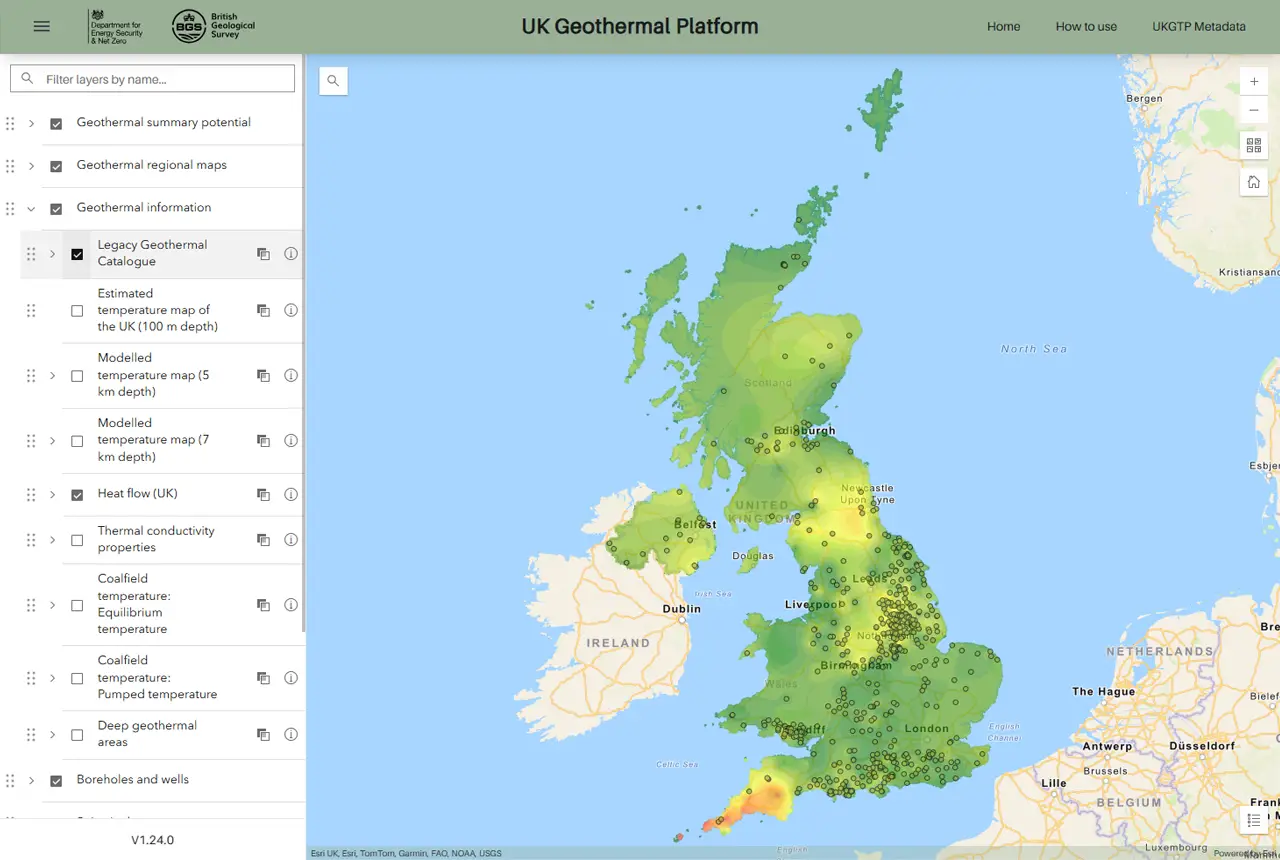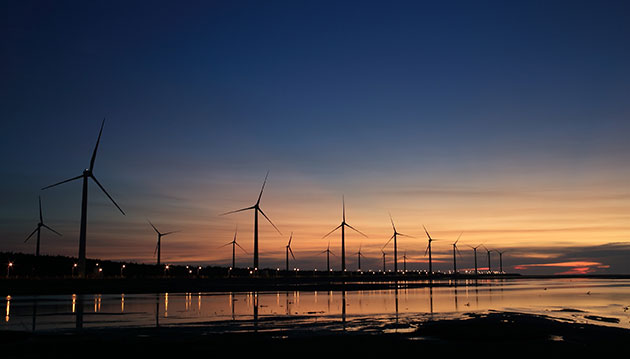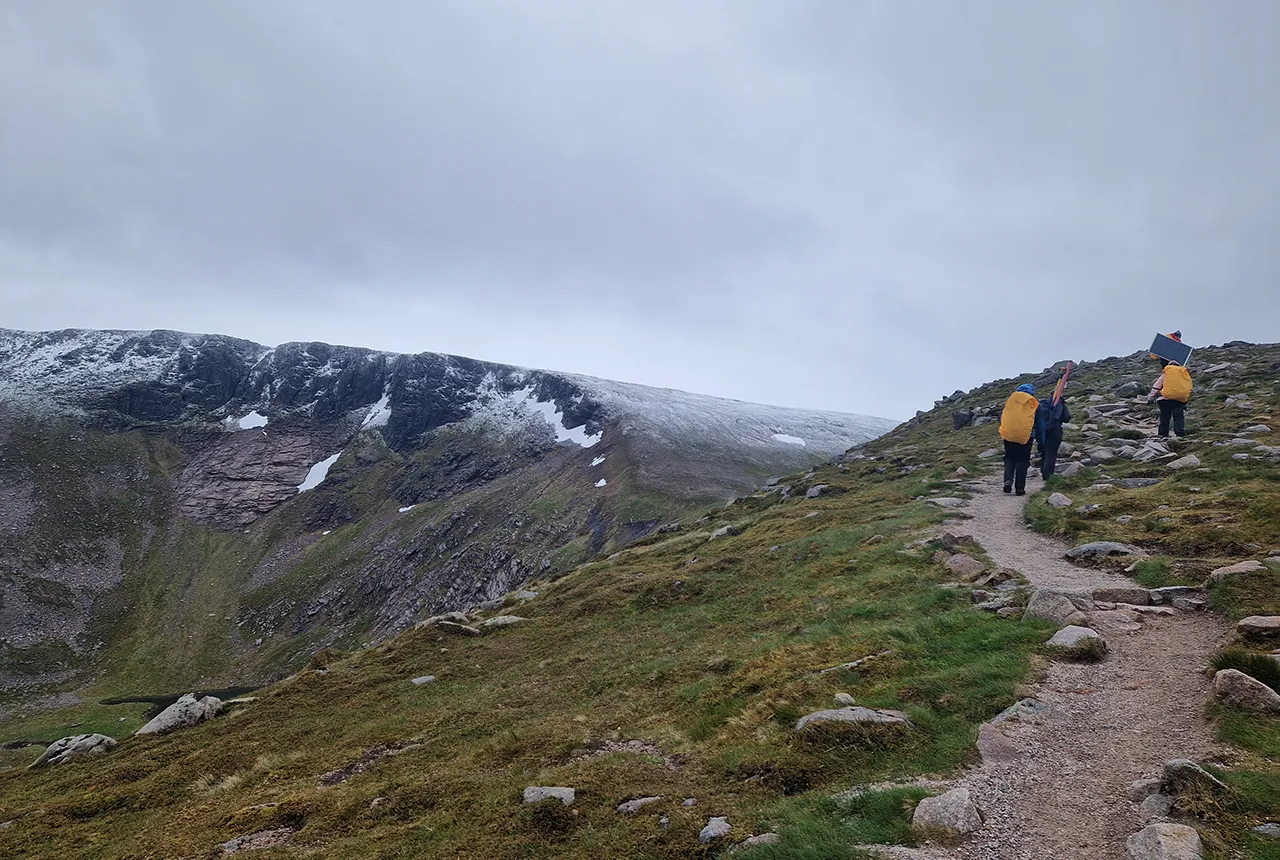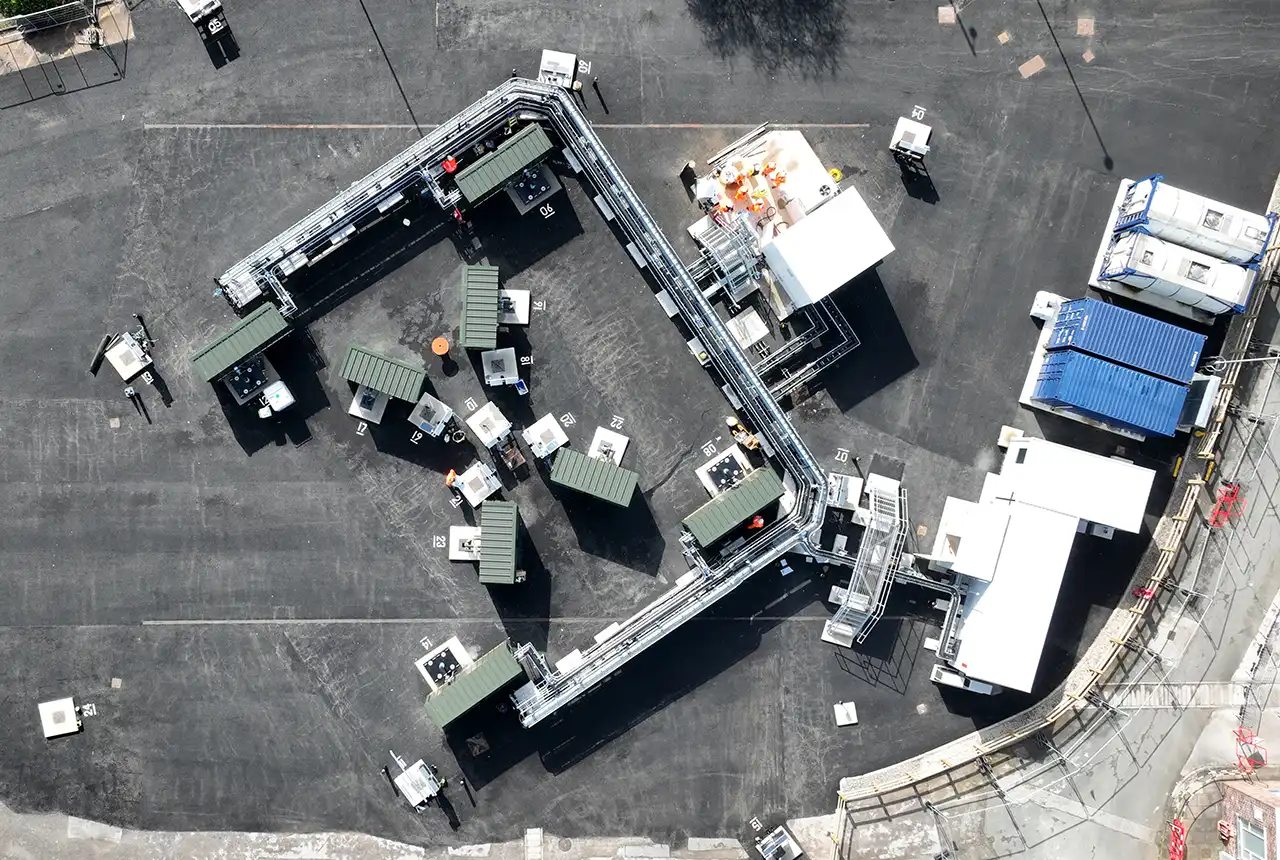First distributed acoustic sensing survey completed at UK Geoenergy Observatory
New research at the Cheshire Observatory has shown the potential for mapping thermal changes in the subsurface using sound waves.
12/11/2025 By BGS Press
Researchers working at the UK Geoenergy Observatory in Cheshire have shown that distributed acoustic sensing (DAS) has the potential to detect subsurface temperature change during geothermal experiments. The research, which was conducted by scientists from the University of Leeds as part of the NERC-funded SmartRes project (grant number NE/X005496/1), used a high-resolution, fibre-optic DAS sensing system installed in boreholes at the Cheshire Observatory.
During two days of surveying in June 2025, over 1000 seismic impacts were made at the ground surface using a controlled seismic energy source. The energy generated by these impacts — essentially sound waves propagating through the ground — was recorded by DAS in the 5 km fibre-optic network installed in the observatory’s 100 m-deep boreholes. Strong seismic arrivals were visible at all depths, validating the survey set-up and providing an encouraging seismic baseline for future thermal testing. During subsequent tests, researchers will measure whether any variations in the arrival time of sound waves can be detected, as this could indicate where heat is moving in the subsurface.
DAS sensing has proven its credentials in many subsurface settings, but is yet to be widely developed for monitoring shallow geothermal operations. Initial analysis of the data recorded in Cheshire confirms the potential of this technology to provide high-resolution monitoring of the Sherwood Sandstone Group aquifer. This will contribute to wider understanding of geothermal processes and help with the design of efficient heating systems that use geothermal energy. The measurements are one of several datasets that provide a baseline for the acoustic, electrical and thermal properties of the Sherwood Sandstone Group.

Seismic energy recorded by DAS fibre-optic cable in borehole TH0422 at the Cheshire Observatory site. The cable reaches 100 m below ground level before returning to the ground surface, hence the symmetry in the seismic arrival pattern. Changes in the arrival time of seismic energy during thermal testing may be correlated with thermal change in the Sherwood Sandstone Group. © Adam Booth/SmartRes.
It’s been very exciting to undertake the first DAS survey at the Cheshire Observatory. Fibre-optic technologies like DAS are giving us unprecedented insight into many subsurface processes. For geothermal applications, the insight is really timely: we need to demonstrate to prospective stakeholders that we understand how subsurface properties will evolve under various heating scenarios.
Prof Adam Booth, associate professor of applied geophysics at the University of Leeds.
The UK Geoenergy Observatories have been designed to advance our understanding of energy storage in shallow geological systems. This cutting-edge research undertaken by the team at the University of Leeds is an excellent demonstration of the potential for these facilities to deliver on that promise.
Dr Mike Spence, science and operations lead at BGS for the Cheshire Observatory.
The UK Geoenergy Observatories are a network of custom-built facilities operated by BGS that were designed to enable research in shallow geothermal energy and underground thermal energy storage. The facilities are available to the UK science community for research, innovation and training activities.
For further information, including details on how to access the sites, please visit the UK Geoenergy Observatories website.
More information
The UK Geoenergy Observatories are new facilities developed by the British Geological Survey for research in shallow geothermal energy and underground thermal energy storage. These technologies have the potential to greatly reduce UK carbon dioxide (CO2) emissions by reducing our use of fossil fuels for heating and cooling of buildings. The observatories, which are located in the Cheshire Sherwood Sandstone Group and Scottish Coal Measures Group, are designed to provide the data and scientific understanding needed to maximise geothermal performance, understand interference between adjacent schemes and minimise any environmental effects.
Smart assessment, management and optimisation of urban geothermal resources’ is a NERC-funded project that seeks to expand the use of UK geothermal energy by understanding and overcoming the technical and societal barriers to its wider uptake. The project is led by Imperial College London, with partners at the University of Leeds, the British Geological Survey and the University of Manchester.
Relative topics
Related news

First distributed acoustic sensing survey completed at UK Geoenergy Observatory
12/11/2025
New research at the Cheshire Observatory has shown the potential for mapping thermal changes in the subsurface using sound waves.

World Cities Day: the geological story of our cities
31/10/2025
Understanding the rocks that underlie our towns and cities, the risks they can present and how they influence urban planning and redevelopment.

UK scientists in awe-rora as national coverage of magnetic field complete for the first time
23/09/2025
New sensors being installed across the UK are helping us understand the effects that extreme magnetic storms have on technology and national infrastructure.

BGS-led paper scoops prestigious award
16/09/2025
New research providing earlier warnings of landslides has been awarded the British Geotechnical Association medal.

New geological ‘pathways’ discovered beneath Welsh capital
02/09/2025
Scientists have discovered cavities in the clay underneath Cardiff, which will influence the siting of future geothermal developments.

New platform highlights geothermal potential across the UK
11/08/2025
A new government-funded geothermal initiative, which includes an interactive map, has launched to help decision makers assess the geothermal potential across the UK.

Goldilocks zones: ‘geological super regions’ set to drive annual £40 billion investment in jobs and economic growth
10/06/2025
Eight UK regions identified as ‘just right’ in terms of geological conditions to drive the country’s net zero energy ambitions.

Exploring Scotland’s hidden energy potential with geology and geophysics: fieldwork in the Cairngorms
31/03/2025
BUFI student Innes Campbell discusses his research on Scotland’s radiothermal granites and how a fieldtrip with BGS helped further explore the subject.

Airlines, shipping companies and sleigh drivers rush to update crucial navigation systems ahead of Christmas rush
17/12/2024
Release of major upgrade to a new model tracking magnetic north prompts global reset of satellite tracking systems across trade and passenger transport routes.

Prehistoric power: 250-million-year-old rocks could contain secrets to net zero future
05/12/2024
BGS has completed a comprehensive scan of Mercia Mudstone rocks that could hold geological secrets of the UK’s past and provide a boost for net zero.

Electromagnetic geophysics in Japan: a conference experience
23/10/2024
Juliane Huebert took in the fascinating sights of Beppu, Japan, while at a geophysics conference that uses electromagnetic fields to look deep into the Earth and beyond.

World-class facility creates new opportunities for geothermal energy in Cheshire
10/10/2024
The £8.3 million underground observatory will enhance the UK’s knowledge on the clean energy required to decarbonise heating.






